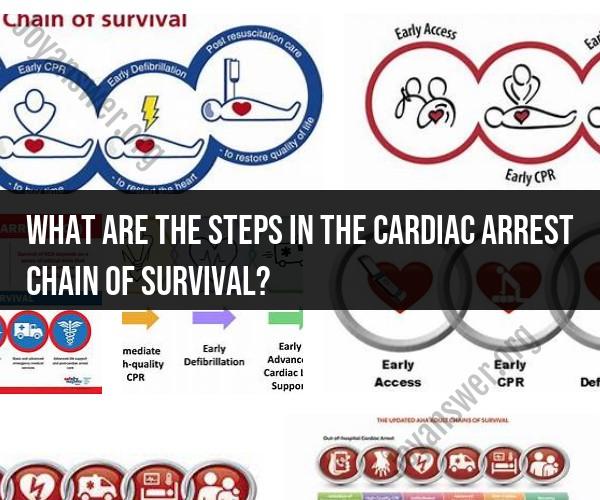What are the steps in the cardiac arrest chain of survival?
The cardiac arrest chain of survival consists of a series of steps aimed at improving the chances of survival for someone experiencing sudden cardiac arrest. These steps are as follows:
Recognition of Cardiac Arrest: The first step is recognizing that someone is experiencing cardiac arrest. This involves identifying signs such as the person becoming unresponsive, not breathing normally, or gasping for breath.
Activation of Emergency Response: Once cardiac arrest is recognized, immediately call for emergency medical help or activate the local emergency response system (e.g., dialing 911 in the United States).
Early Cardiopulmonary Resuscitation (CPR): If you are trained in CPR, start chest compressions and rescue breathing (if trained to do so) as soon as possible. High-quality CPR helps maintain blood circulation and oxygenation until professional help arrives.
Early Defibrillation: If an automated external defibrillator (AED) is available, use it as soon as possible. AEDs can analyze the heart's rhythm and deliver an electric shock to restore a normal heartbeat in certain cases.
Advanced Life Support: Once professional medical personnel arrive, they will take over and provide advanced life support, including more advanced medical interventions and medications.
Post-Cardiac Arrest Care: Following successful resuscitation, the person may require intensive care and treatment to address the underlying cause of cardiac arrest and prevent complications.
Recovery and Rehabilitation: After initial treatment, survivors of cardiac arrest may need rehabilitation and ongoing medical care to optimize their recovery and quality of life.
Remember that rapid intervention is critical in cases of cardiac arrest, and the earlier CPR and defibrillation are initiated, the better the chances of survival. Training in CPR and the use of AEDs is valuable for individuals and communities to improve outcomes in these emergency situations.


